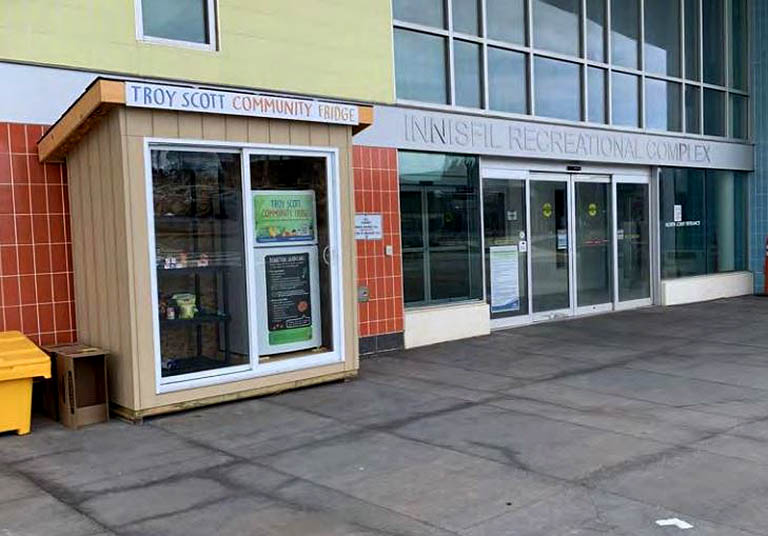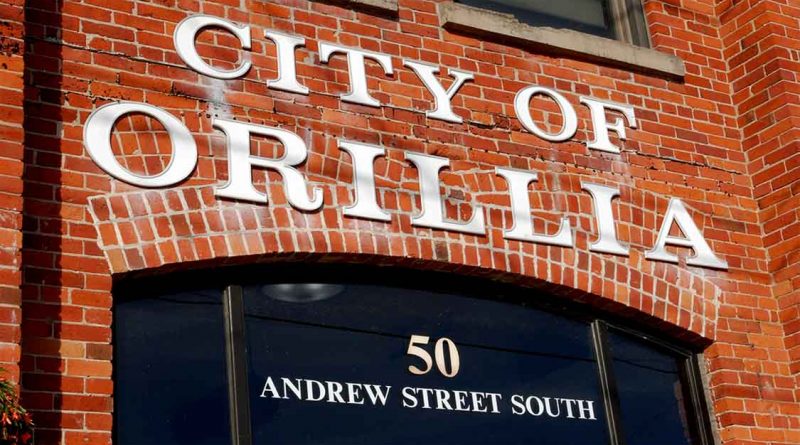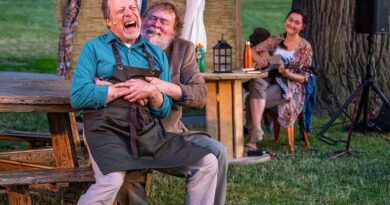Council Preview Part One
By John Swartz
Orillia council has its first scheduled meetings Wednesday beginning at 10 a.m. These result from rescheduling meetings from last week and Monday. First up is a closed session to discuss committee reappointments and appointments to the Orillia Power Generation Board.
They expect to go to the open committee meeting at 10:45 a.m. and have 5 items in the consent portion along with 4 other items.
In the consent agenda, notable is a motion to receive $867,826 from the federal government’s Building Safer Communities Fund. In an example of a quick turnaround, the feds approached the City in June to provide information about the grant, the City submitted an application in November for a program to target at risk youth to reduce gun and gang violence, and here we are today, accepting the funds.
The youth center will be the lead department developing programs. The money is spread out over 4 years and there is no requirement for the City to also supply funding.
Another consent report asks council to approve a 2023 budget now of $925,191 for insurance. This is 3.8% over 2022. The term starts January 1, so budget approval needs to happen ahead of January’s budget meetings. The City will also be switching brokers from Marsh Canada to BFL Canada.
Hotel Tax
An annual update report of the results of the municipal accommodation tax has a staff recommendation to be received, which means there is no action to take. The tax ads 4% to hotel bills and net amounts collected are split 50/50 with Ontario’s Lake Country marketing group. The money is supposed to be used by both groups to market and promote tourism. The City used $10,000 in 2022 to partially cover costs of the See You on the Patio summer program.
The amount of revenue is telling on the state of tourism. The income budgeted for 2022 was $292,000. To the end of August $476,413 was collected. The City’s portion is split between 60% for immediate use on marketing and promotions and 40% to a reserve fund.
Some preliminary results for a public survey about the patio program show 88.7% enjoyed visiting the various patios downtown. Only 4 % said the program should be scrapped and 78% wanted the Farmers’ Market to continue to have Friday evening markets.

Respondents also indicated, by an almost 2 to 1 margin, a preference to have Mississaga Street closed both Friday and Saturday over just Friday and just Saturday. They also were a majority regarding closing the street Friday to Sunday. In other words people want more reason to go downtown and spend money in an outdoor mall-like setting.
Without quantifying, staff also said respondents would like to see more retail stores open to shop at and more entertainment, possibly engaged around themes (e.g. maybe a Pirate Night, Shop Jockey night for the Classic Car Show, Blues/Jazz/Opera theme nights, or a Dress Like You Know How To Tie-Dye for Mariposa weekend). The DOMB is the lead for the survey and they want more time to get more input from merchants.
The fund was also used to host FISH TV to shoot two episodes in the area and they City also hosted the Slo-Pitch National’s Men’s and Ladies “A” Division championship.
An online presence of Facebook and Instagram, along with a tourism website are also part of the marketing efforts the MAT has been used for. Money was spent advertising on Facebook resulting in a 250% increase in reach, Instagram also had an increase of 321% but this was achieved without advertising. In both case 75% of the audience are women and Facebook skews to an older demographic.

Innisfil’s Community Fridge
Next, a report about creating a Community Fridge project is back to council with staff recommendations. The report itself is to receive. An alternative option is to include $1`8,500 in the library budget (where the food shelter would be located), but staff say the City cannot be the lead organizer for several staffing and logistical reasons and where it has been successful other community groups take on the responsibility. The concept is similar to take a penny/leave a penny, but with food.
Another consent report asks council to approve a 2023 budget now of $925,191 for insurance. This is a 3.8% over 2022. The term starts January 1, so budget approval needs to happened ahead of January’s budget meetings. The City will also be switching brokers from Marsh Canada to BFL Canada.
Moving On
Of the reports council will deal with individually, one deals with the washboard of a road otherwise known as Laclie Street and its reconstruction.
Staff note it was voted the worst road in the entire central region in the Automobile Association’s Worst Roads campaign for 2022. Staff estimate the underground infrastructure from downtown to North Street is 90 years old, and from there to Murray Street between 20 and 60 years old (20? This writer lives on Laclie and there hasn’t been any work – except for a quick, overnight resurfacing of the Neywash to North Street in 1997- on the road the entire 33 years of living here).
The results of the first public input period showed a clear preference to not widen Laclie to three lanes and bikes lanes between Neywash and North and to transition two lanes to three lanes and a turning lane by St. Jean Street and continue northward with three lanes plus bike lanes to Murray Street.
This design phase is not done yet. The study report has to be published and available for 30 days. The 2023 capital budget includes $6.8 million for the first phase of reconstruction (Neywash to north of Borland Streets) with the next three (it used to be scheduled as two) phases in subsequent years. Staff estimate the entire project to cost $30 million.

Another infrastructure report relates to making ice at Rotary Place. Council had a special meeting December 1 (of which SUNonline/Orillia received no notification) to authorize staff to rent ice making equipment in order to have ice ready in one pad ready the first week of January and the other one a couple weeks later. This temporary fix will cost $425,000 and provide an 18 month window for a permanent solution.
This report outlines and recommends council authorize spending $1.9 million for an indoor compressor and an outdoor dry condenser. The issue is the current cooling tower is believed to be the source of an outbreak of Legionnaires’ Disease, and ongoing testing has found the presence of the Legionella bacteria recently. The City decided to shut down the ice making system and figure out a new plan that would eliminate the risk of generating the bacteria.
Meeting Format Changes
Staff has a report outlining radical changes to how council conducts business in public. One of the stated reasons for recommending changes flips the script:
“… (to) enhance public participation by providing reasonable and concrete expectations for participation,” rather than the public having expectations on how City business is conducted.
Staff recommends dispensing with committee meetings every other week and hold them the same day as regular council meetings. A new schedule of meeting dates will be the 2nd and 4th Monday of every month (except July and August) and times will move from 4 p.m. (with special meetings like planning starting earlier in the day) to a 2 p.m. start for all types of meetings.
One agenda will include all things with planning meetings kicking off the day, followed by presentations, deputations, public forum, closed session, committee, then the regular meeting.
A never tried method of condensing committee items in Orillia, but not unusual in other places, is to list all items on consent, placing the onus on councillors to pull items for discussion. Normally disposed committee meeting items go straight to the next regular meeting the following week for ratification, but this new system would mean committee decisions would be finalized by regular meeting on the same day.
The entire reason for committee meeting decisions to be finalized a week later is to allow public reaction time before anything is fait accompli. Until now consent items tend to be routine and if formalized right away thee wouldn’t be a problem
In order to preserve the time lag on important issues worthy of discussion, the new procedure will automatically put pulled items over to the regular council meeting two weeks later instead of being directly dealt with on the same day.
Another critical change is eliminating the ability of a councillor to move to reconsider any previous decision – unless that councillor was on the winning side of the previous vote. One can think of instances when reconsiderations were moved by councillors who were on the losing side and accepted, resulting in a reversal of a previous decision. The rec center comes to mind.
Staff are positioning these changes as helping the public become more engaged. Curiously they say moving meetings to 2 p.m. are needed because, “7,260 of the City’s 13,475 households (i.e., 54% of the total households) have a household income of $59,999 or less. This is indicative of non-white collar jobs that are outside the 9-5 job segment. A preference to conduct City meetings in the evenings only may be construed as privileged and elitist as it stems from the belief that residents would have the time and energy to attend meetings in the evening hours.”
One could wonder when blue collar jobs stopped ending at 5 p.m. That might be considered elitist in itself. One could also wonder how the bureaucracy expects anyone to take a large amount of time in the middle of their day to pay attention to what council is doing. There is also no consideration for the public’s staying power. Since the two types of meetings are currently happening on separate weeks and normally take two to three hours each to complete, and other meetings often take an hour or more, to expect the public to stay engaged with a meeting in the new format for anywhere from 4 to 6 or 7 hours in order to learn the final outcome of any issue they are interested in is really overstating an observer’s ability to follow proceedings with many parts that are frankly boring and of no interest.
On top of that the proposal to break in the middle for closed sessions of undetermined length instead of holding those meetings every other week before the public is expected to tune in just creates an opportunity for observers to not come back.
Other changes include eliminating deputations about matters relating to previous agenda decisions. So for example, a resident with expert knowledge on a subject could not present a case for council to change a decision. Staff also want people taking advantage of the public forum to provide subject matter to staff before the meeting, which is onerous since people attending meetings sometimes do not expect to make public statements and often only approach the microphone after taking into account comments made by councillors relating to the issues they are interested in and sometimes they wish to divide their time speaking to two issues.
Staff also want people to pre-register (a meaningless term since you are pre-registered as you are reading this – i.e. the state before registering for a time slot) in order to use the public forum. This too could be problematic since in the past many people have come to council not sure they want to speak and only decide to do so based on the proceeding they witness.
Furthermore, staff recommend no one be allowed to take advantage of the public forum if they spoke on the same topic at any other statutory meeting. For example if one spoke about a new development at the planning meeting portion, you could not speak during the forum of the regular meeting, which reduces the ability to voice opinion on contentious items. It seems a logical place for the forum is before voting on by-laws to be really effective.
The accompanying meeting schedule shows the annual budget meetings will start January 31 and continue the first two weeks of February.
Enquiry Motions
Mayor McIsaac and councillors Campbell and Czetwerzuk have one to have staff report on ridesharing companies operating in Orillia and what other municipalities are doing on this subject.
You can attend council meetings now, or watch them live on Rogers TV.
A preview of Monday’s planning meeting and regular council meeting is in Part 2.
(Photos by Swartz – SUNonline/Orillia)




